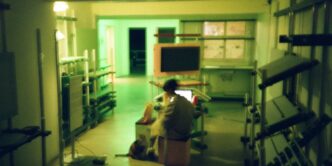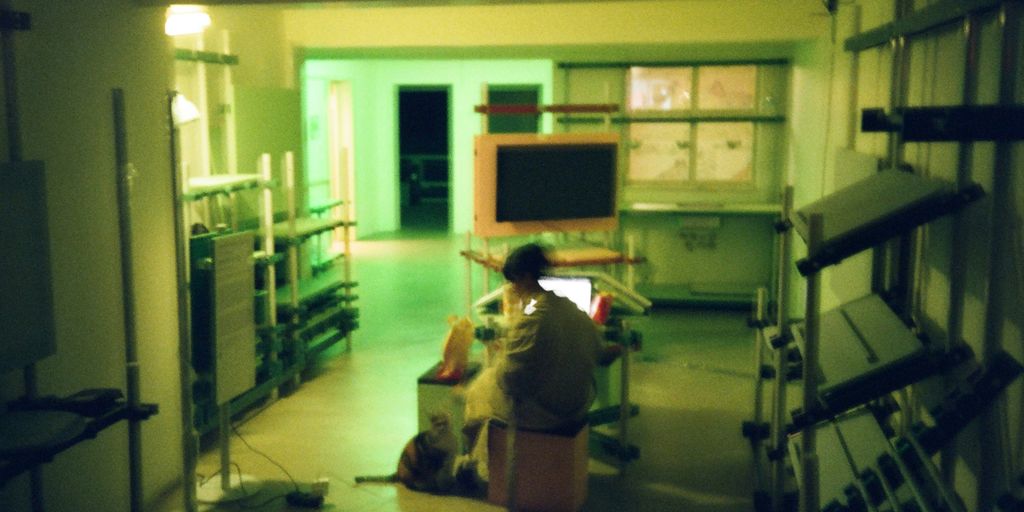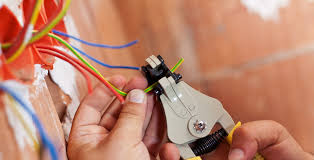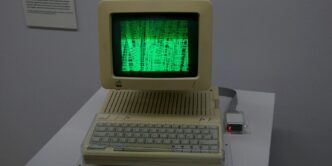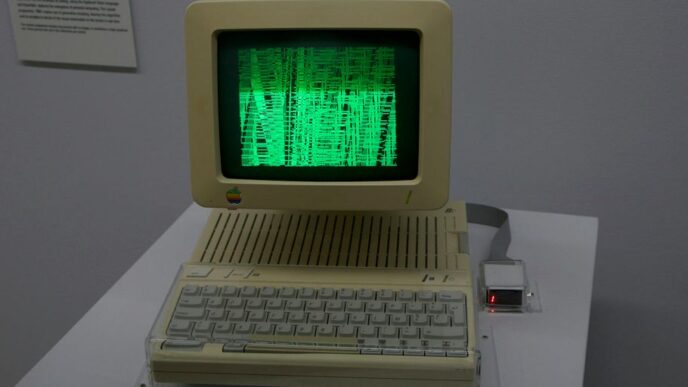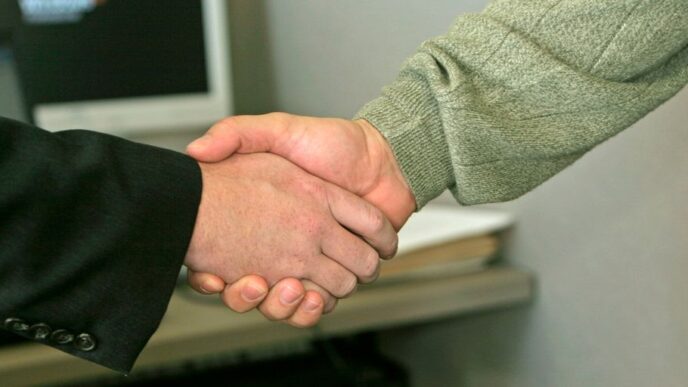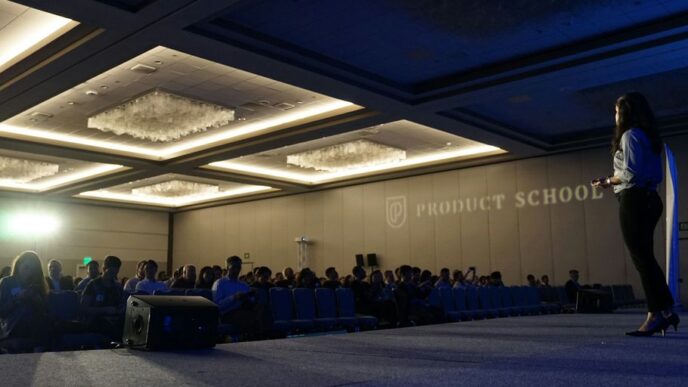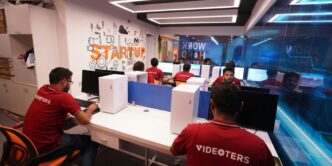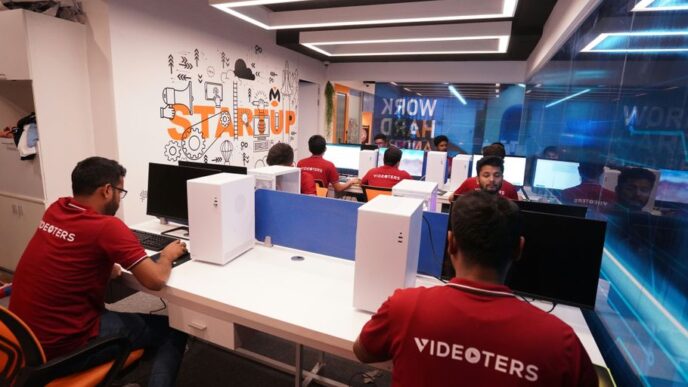Hospitals often need to keep a close eye on certain patients. Maybe someone is at risk of falling, or they are confused, or they might even hurt themselves. Traditionally, a hospital would assign a person, called a sitter, to watch these patients. But with more patients and fewer family members able to stay, the need for sitters is growing. This costs hospitals a lot of money. Because of this, many healthcare places are looking into telesitters, which are virtual monitoring systems. This article will talk about how telesitters are being used across the country, and what’s good and bad about them.
Key Takeaways
- Telesitters are changing how hospitals watch patients, moving from human sitters to virtual systems.
- These systems use cameras and other tech to keep an eye on patients, and can alert staff quickly if there’s a problem.
- Hospitals can save a lot of money by using telesitters instead of hiring many human sitters.
- Even with the benefits, there are concerns about patient privacy and how being constantly watched affects patients.
- The pandemic really sped up how fast hospitals started using telesitters, showing they can be a big help in tough times.
Understanding the Telesitter in Modern Healthcare
Defining the Telesitter Role
Okay, so what is a telesitter? Basically, it’s like having an electronic electronic sentry watching over patients. Instead of a person sitting in the room, it’s a camera and monitoring system. This allows one person to keep an eye on multiple patients at once. Think of it as a virtual sitter, using technology to help hospitals manage patient safety, especially when they’re short-staffed. It’s not just about watching; it’s about responding quickly if something goes wrong. They can talk to the patient through the system and alert staff if needed.
Evolution of Patient Monitoring
Patient monitoring has come a long way. We used to rely solely on in-person sitters, which was expensive and not always efficient. Now, we’re seeing a shift towards technology-driven solutions. Here’s a quick look at how things have changed:
- Traditional Sitters: One-on-one supervision, high cost, limited reach.
- Early Telemetry: Basic vital sign monitoring, limited video capabilities.
- Modern Telesitters: Real-time video and audio, remote communication, integration with other hospital systems.
It’s all about doing more with less and improving patient outcomes. The goal is to provide better care, even with the challenges hospitals face today.
Telesitter Technology Overview
Telesitter systems usually involve a few key components. There’s the camera unit in the patient’s room, which can often be moved remotely. Then there’s a central monitoring station where a trained technician watches the feeds. These systems often include features like:
- Two-way audio communication
- Night vision
- Alert systems for falls or unusual activity
- Integration with electronic health records
Some systems even use AI to detect potential problems before they happen. It’s pretty high-tech stuff, and it’s constantly evolving. The idea is to make patient supervision more effective and efficient.
Key Benefits of Telesitter Implementation
Telesitter systems are becoming more common in hospitals, and for good reason. They offer a bunch of advantages that can really make a difference in patient care and how hospitals run. Let’s get into the specifics.
Enhancing Patient Safety and Outcomes
Telesitters can significantly improve patient safety by providing continuous monitoring. Think about it: a single technician can keep an eye on multiple patients at once, catching potential problems before they escalate. This is especially helpful for patients who are at risk of falls, confusion, or self-harm. One hospital reported that the average staff response time after a Telesitter alert is 15.1 seconds. That’s fast!
- Reduced fall rates: Telesitter systems have been shown to decrease patient falls. One report indicated a 51% reduction in falls across 11 hospitals.
- Faster response times: With constant monitoring, staff can respond more quickly to patient needs, preventing complications.
- Improved patient outcomes: By catching issues early, telesitters can help improve overall patient outcomes and reduce the likelihood of adverse events. For example, virtual ICU platforms can improve evidence-based care.
Improving Hospital Operational Efficiency
Beyond patient safety, telesitters can also make hospitals run more smoothly. By centralizing patient monitoring, hospitals can use their staff more efficiently and reduce the burden on nurses and other caregivers.
- Reduced staffing costs: Telesitters allow a single technician to monitor multiple patients, reducing the need for one-on-one sitters. A single clinical technician can monitor between 12 and 16 patients simultaneously.
- Better resource allocation: With telesitters handling routine monitoring, nurses can focus on more complex tasks and direct patient care.
- Streamlined workflows: Telesitter systems can be integrated with other hospital systems, streamlining workflows and improving communication between staff members.
Reducing Staff Burnout and Workload
Hospital staff, especially nurses, often face high levels of stress and burnout. Telesitters can help alleviate some of this pressure by taking over the responsibility of constant patient monitoring. This can lead to happier, more engaged staff and better patient care.
- Reduced workload: Telesitters take on the task of continuous monitoring, freeing up nurses and other staff to focus on other duties.
- Lower stress levels: By reducing the burden of constant observation, telesitters can help lower stress levels among hospital staff.
- Improved job satisfaction: Happier, less stressed staff are more likely to be engaged and satisfied in their jobs, leading to better patient care and reduced turnover. In a 2014 national survey, 59.2% of healthcare safety professionals felt the use of TeleSitters for 1:1 observation would be useful.
Financial Impact of Telesitter Systems
Cost Savings in Patient Supervision
Okay, so let’s talk money. Hospitals are always looking for ways to save a buck, and telesitter systems are making a splash. The big win here is reducing the need for constant, one-on-one human supervision. Think about it: instead of paying someone to sit in a room all day, you’ve got a tech monitoring multiple patients at once. One community hospital reported spending $425,000 annually on 14 sitters a day. That’s a lot of dough! Telesitters can seriously cut into those costs. Plus, with quicker response times – I saw one hospital boasting about 15-second response times after a telesitter alert – you might even avoid some incidents altogether. That means fewer complications and lower liability. It’s a win-win.
Investment Versus Traditional Sitter Costs
Alright, so you’re probably wondering about the upfront costs. Yeah, there’s an investment involved. You’ve got to buy the equipment, set up the system, and train your staff. But here’s the thing: when you stack that up against the ongoing expense of paying traditional sitters, the numbers start to look pretty good. One estimate I saw said that telesitter implementation – including the tech, training, and labor – comes in at about 20% of what you’d spend on regular sitters. That’s a huge difference! And don’t forget, telesitters can increase visual coverage of the facility, which is something a human sitter can’t do.
Long-Term Economic Advantages
Now, let’s zoom out and think long-term. It’s not just about saving money today; it’s about building a more efficient and sustainable system for the future. Telesitters can help reduce staff burnout, which means lower turnover and less money spent on recruiting and training new employees. Plus, if you can prevent falls and other incidents, you’re looking at fewer lawsuits and lower insurance premiums. Some hospitals are reporting savings of up to $2.5 million over two years. That’s real money that can be reinvested in other areas of patient care. Plus, as technology advances – think integration with IoT and biometric devices – telesitter systems are only going to become more powerful and cost-effective. It’s an investment in the future of patient safety and hospital finances. It’s about using AI on healthcare diagnostics to improve the bottom line.
Ethical Considerations in Telesitter Use
Addressing Patient Privacy Concerns
Okay, so let’s talk about privacy. It’s a big deal, right? Especially when we’re talking about sticking cameras in patient rooms. The main worry is that patients might feel like they’re constantly being watched, which can be super uncomfortable. Some companies say their cameras don’t record or store anything, and they have features like "virtual curtains" to block the view. But still, it’s hard to shake that feeling of being monitored. People want to feel safe and in control, and having a camera on them all the time can mess with that.
Impact on Patient Comfort and Control
Think about it: you’re already in a vulnerable position when you’re in the hospital. Now, add a telesitter into the mix. It can change the whole dynamic. One chaplain I read about mentioned that patients might have fewer deep conversations because they know someone is always watching. The human sitter can be a friend, someone to talk to. But a camera? Not so much. It shifts the culture of care, and we need to make sure we don’t lose that human connection. Patients want to control who sees them and secure their surroundings. Constant monitoring can take that away.
Balancing Technology with Human Connection
Telesitters can really help hospitals save money and keep patients safe, but we can’t forget the human side of things. It’s about finding a balance. We need to use this technology responsibly and make sure patients still feel cared for. Maybe it means having clear policies about when and how telesitters are used. Or making sure staff are trained to talk to patients about it and address their concerns. The goal is to make sure technology helps, not hurts, the patient experience.
Legal and Regulatory Aspects of Telesitters
HIPAA Compliance and Data Protection
Okay, so when we’re talking about telesitters, we absolutely have to talk about HIPAA. Patient data is protected under HIPAA, and that includes anything the telesitter system records, whether it’s video or audio. Hospitals need to have really clear policies about how patient viewing is handled. Think about it: you wouldn’t want just anyone watching you, right? These policies should be in place before you even think about setting up a telesitter program. Patient consent is often included in admission forms, which is a good start. It’s also common practice for hospitals to avoid recording or storing patient video to ease privacy concerns. It’s a tricky balance, but protecting patient privacy is non-negotiable.
FDA Regulations for Monitoring Devices
Here’s a fun fact: surveillance tech in patient rooms usually doesn’t need FDA approval. However, there’s a catch! If your telesitter system uses thermal cameras, those do fall under FDA regulations. So, if you’re using thermal cameras, make sure they’re FDA-approved. It’s just one of those things you need to check off the list. It’s all about making sure the equipment is safe and effective for patient monitoring.
Guidelines for High-Risk Patient Monitoring
Telesitters are great, but they’re not a replacement for good old-fashioned human observation, especially for patients at high risk for suicide. According to The Joint Commission, if a patient is identified as high risk, you need constant, one-on-one visual observation by a qualified staff member. Telesitters can supplement that, but they can’t replace it. It’s about having a qualified staff member dedicated to observing only one patient at all times. It’s a safety net, and you want to make sure it’s a strong one.
Telesitter Technology and Future Innovations
Current Telesitter System Capabilities
Telesitter systems have come a long way! For years, hospitals used basic cameras for patient monitoring, often in a 1:1 setup. Now, a single clinical technician can monitor multiple patients simultaneously, sometimes up to 16 at once. This shift has been driven by the need to reduce costs and improve patient safety. These systems often include features like two-way audio, allowing technicians to communicate with patients and staff. One hospital reported their average staff response time after a telesitter alert is 15.1 seconds. Pretty quick, right?
Integration with IoT and Biometric Technologies
The future of telesitting is all about integration. Think IoT devices and biometric sensors working together to provide a more complete picture of a patient’s condition. Imagine a system that not only monitors video but also tracks vital signs, movement, and even sleep patterns. This kind of virtual medical support could lead to earlier detection of potential problems and more personalized care. We’re talking about a move towards multi-sensory systems that track patient vitals and activity at the same time. It’s like having a virtual nurse constantly checking in.
The Rise of Multi-Sensory Monitoring
Multi-sensory monitoring is where things get really interesting. Instead of just relying on video, these systems use a combination of sensors to gather data. This could include:
- Wearable sensors: Tracking heart rate, respiration, and activity levels.
- Bed sensors: Detecting movement and pressure, which can help prevent falls.
- Environmental sensors: Monitoring room temperature, noise levels, and lighting.
By combining all this data, telesitter systems can provide a much more detailed and accurate assessment of a patient’s condition. This can lead to better outcomes and a more efficient use of resources. Plus, it could help reduce staff burnout by automating some of the more routine monitoring tasks. It’s a win-win!
Telesitters in Crisis: Lessons from the Pandemic
Telesitters as a Necessity During COVID-19
The COVID-19 pandemic really threw healthcare for a loop, didn’t it? Hospitals were scrambling to find ways to keep an eye on patients while also trying to limit the spread of the virus. Traditional sitters weren’t always an option because of infection risks. That’s where telesitters really stepped up. They went from being a ‘nice-to-have’ to a ‘must-have’ almost overnight.
Adapting Patient Care in Unprecedented Times
With the sudden surge in patients and the need for isolation, hospitals had to rethink how they delivered care. Telesitters allowed for continuous monitoring without exposing staff or using up precious PPE. It wasn’t just about watching patients; it was about adapting to a whole new reality. Some hospitals even used mobile platforms, like telehealth on wheels, to help doctors interact with patients while maintaining social distance. It was a wild time, and healthcare teams had to get creative, fast.
Accelerated Adoption of Virtual Monitoring
The pandemic definitely sped up the adoption of virtual monitoring tech. Hospitals that might have been hesitant before suddenly saw the value in remote patient observation. It wasn’t just about the immediate crisis, either. Many realized that telesitters could offer long-term benefits, like reducing staff burnout and improving patient safety. It’s like everyone suddenly realized, "Hey, this tech is actually pretty useful!" And now, even as things (hopefully) get back to normal, virtual monitoring is here to stay. The use of telesitters has offered healthcare administrators reduced personnel costs and increased visual coverage of the facility.
Conclusion
So, what’s the big takeaway here? Telesitters are definitely changing things up in hospitals. They help keep patients safe, especially when there aren’t enough people to watch everyone. And yeah, they can save hospitals some money too, which is a big deal. But we also need to think about how patients feel about being watched all the time. It’s a balance, right? We want to use new tools to make care better, but we also want to make sure patients feel comfortable and respected. It’s a work in progress, but it’s clear these virtual helpers are here to stay.
Frequently Asked Questions
What exactly is a telesitter?
A telesitter is a special camera system that lets hospital staff watch patients from far away. These systems often have a camera on a rolling stand, like an IV pole, that shows live video and sound from a patient’s room. A trained person watches many patients at once on a screen. If they see something wrong, they can talk to the patient through the system and tell the nurses.
Why do hospitals use telesitters?
Hospitals use telesitters to keep patients safe, especially those who might fall, get confused, or hurt themselves. Instead of having a person sit in every room, which costs a lot, telesitters allow one staff member to watch many patients at the same time. This helps prevent accidents and makes sure patients get help quickly.
How do telesitters save hospitals money?
Telesitters can save hospitals a lot of money. Hiring people to sit with patients all day and night is very expensive. Telesitter systems, even with the cost of the equipment and training, are much cheaper in the long run. They also help reduce patient falls, which can lead to fewer injuries and lower costs for the hospital.
Are there any downsides to using telesitters?
While telesitters are very helpful, they do bring up some concerns. Patients might worry about their privacy because they are being watched by a camera. Some patients might also feel less comfortable or like they don’t have control over their space. It’s important for hospitals to make sure these systems are used in a way that respects patients’ feelings and privacy.
Are telesitters allowed everywhere, and are there rules for their use?
Yes, there are rules about how telesitters can be used. Hospitals must follow laws like HIPAA, which protects patient information. This means the video feeds are usually secure and not stored for a long time. Also, for very high-risk patients, like those who might try to hurt themselves, a human sitter is still needed because a camera can’t provide the same level of direct care and support.
What’s next for telesitter technology?
The future of telesitters looks exciting! They are already getting better with new technology. Soon, they might connect with other smart devices in the room or even check a patient’s vital signs automatically. This could lead to systems that use many different ways to monitor patients, making care even safer and more efficient.

